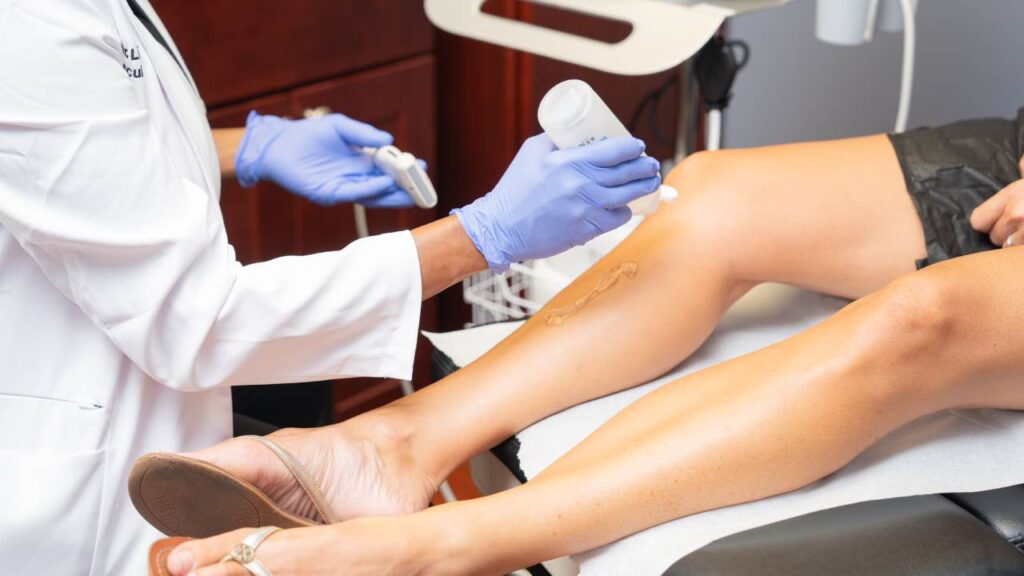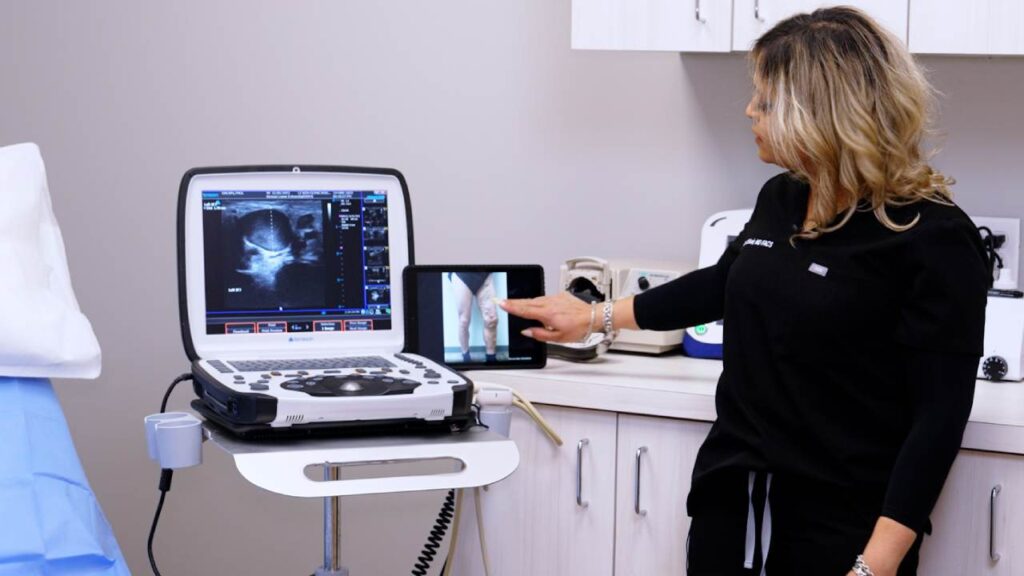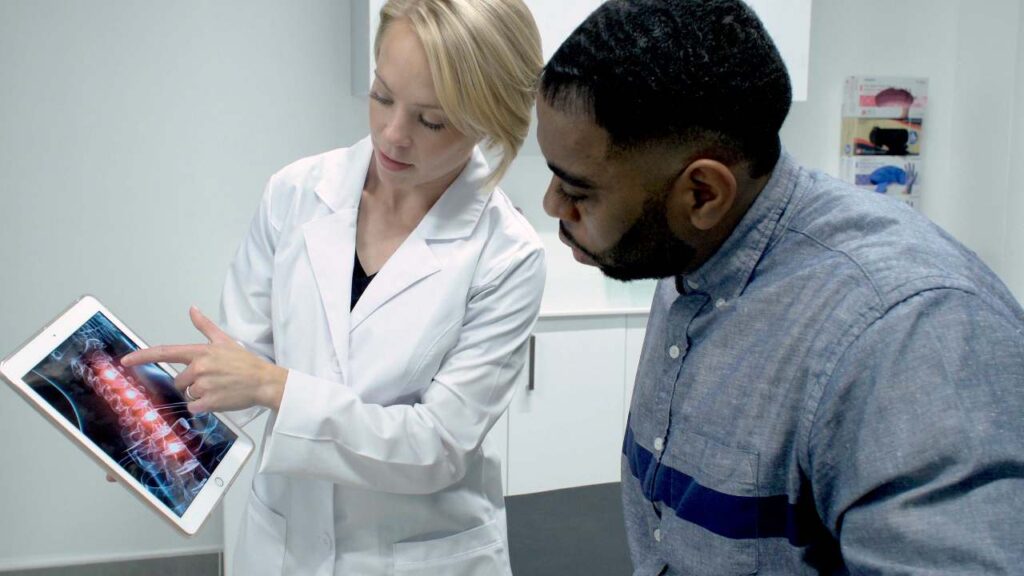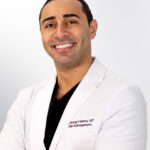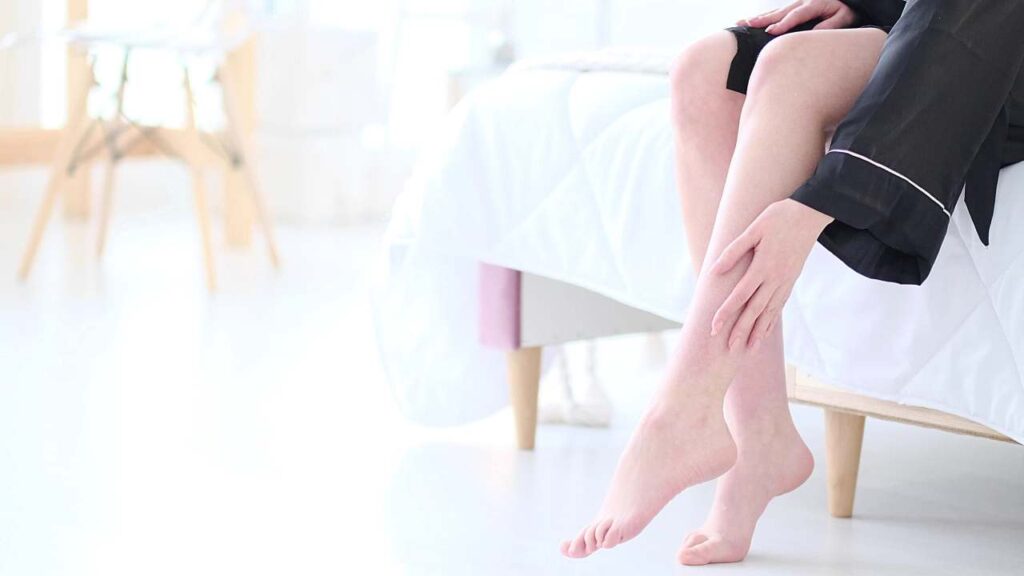The human body contains a massive network of veins and arteries that carry blood in our body. The function of veins in particular is to carry ‘deoxygenated’ blood, i.e. blood that has no oxygen and carries carbon dioxide, from all organs to the heart. Veins in our legs and face have the most work to do as they are the furthest away from the heart. Veins on the legs have to pump blood against gravity, making their job even tougher.
To prevent blood from flowing back into the legs, veins have valves that close if blood tries to flow backwards. But over time, some valves may weaken. When this happens, blood may get collected in the veins, straining against the walls of the veins. This is called Chronic Venous Insufficiency.
Chronic Venous Insufficiency is a serious condition where valves in the vein have been damaged and blood cannot flow back to the heart sufficiently. If caught early and if only superficial veins are affected, Chronic Venous Insufficiency can easily be treated with minimally invasive techniques and requiring only local anesthetic. But left untreated, Chronic Venous Insufficiency can lead to serious complications such as blood clots and ulcers. Once deeper veins in the legs are affected, you may need vascular surgery for treatment. It is extremely important to screen for possible Chronic Venous Insufficiency if the symptoms mentioned above arise.
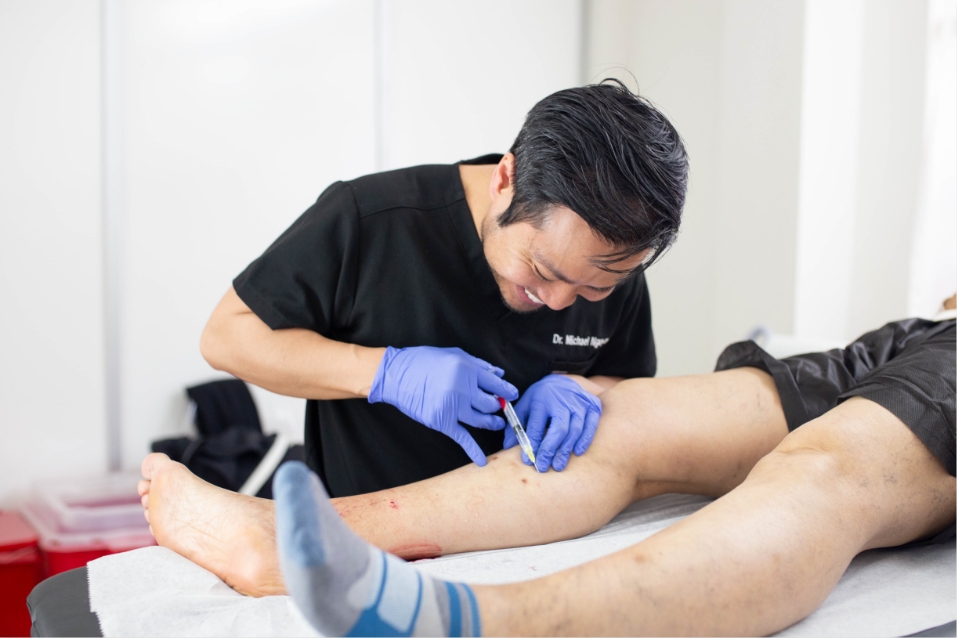
What are the signs and symptoms of CVI?
CVI can present with the following symptoms:
- Spider and varicose veins: Spider veins are thin red, blue, or purple lines that appear in clumps. They occur when blood pooled into the veins branch out like spider webs. Varicose veins appear as swollen and enlarged veins that are blue or purple in color. They are often lumpy, bulging, or twisty in appearance. Spider and varicose veins can be a symptom of Chronic Venous Insufficiency.
- Heaviness or aching in the legs: If your veins are considerably damaged, your legs will not have enough blood flow. This will cause symptoms such as heaviness or aching.
- Worsening leg fatigue: If your legs feel more and more tired for no obvious reason as time passes, it could mean that the damage to your veins is getting worse.
- Swollen feet and ankles: Swelling in the feet and ankles is a sign that blood is getting accumulated around your feet and ankles. This could be because of damage in your veins, and you need to see a doctor if you notice this happening frequently alongside spider and varicose veins.
- Itchy and irritated skin: If the spider and varicose veins are itchy and irritated and if you notice that the skin over the affected veins are dry, thin, and itchy, it could be a symptom of CVI.
If you are experiencing any of these symptoms, book an appointment with the best vein doctors in the best vein center in Southern California.
What puts me at risk of developing CVI?
There are controllable and uncontrollable risk factors for Chronic Venous Insufficiency. Uncontrollable risk factors include:
- Gender: Women are more likely to develop CVI than men.
- Genetics: You are more likely to develop CVI if it runs in your family.
- Pregnancy: Pregnant women can be at higher risk of developing CVI, especially if it is the second or consequent pregnancy.
Controllable risk factors include:
- Smoking
- Obesity
- Poor Diet
- Work or lifestyle involving prolonged standing
- Lack of exercise
How can I treat CVI?
Innovation and massive advances have meant the development of state-of-the-art technology for spider and varicose vein treatment. Vein treatment procedures have become less and less invasive over the last decade. Most procedures now require only local anaesthetic, and some don’t require anaesthetics at all. Highly trained vein specialists can use a variety of diagnosis and treatment methods that would work best for you. Depending on your specific needs, our doctors will then recommend minimally invasive spider and varicose vein treatment methods such as endovenous laser surgery, VenaSeal, radiofrequency ablation, and sclerotherapy using state-of-the-art technology that work best for you. Because the procedures are all minimally invasive, you can be treated on an outpatient basis and can easily fit the treatment procedure in your schedule with little disruption to your daily life.
In rare cases however, surgical treatment may become necessary. This is performed by a vascular surgeon. You must see a doctor at the earliest sign of CVI to prevent this.
Best vein specialists in California
The Vein Center boasts a team of highly experienced vein doctors who are at the top of their fields, are double board certified and have all been trained at Ivy League universities. With cutting edge technology and world class medical infrastructure at their disposal, these doctors use the most advanced procedures to treat their patients. To top it all, our doctors know to keep patients’ comfort ahead and treat them with friendliness, patience, and kindness. Rest assured that our highly trained doctors will perform the diagnosis and treatment processes for your problems with utmost care and expertise, and their kind and approachable natures mean that your concerns and queries will always be heard.
Our vein center at San Diego is currently located near the Torrey Pine beach state park, close to the Westfield UTC Shopping center. Our experienced Harvard-trained vein doctors can offer the best care possible to help you.

